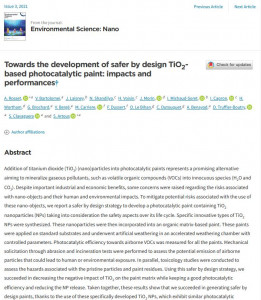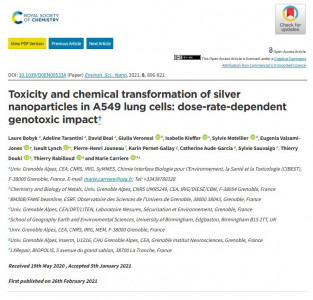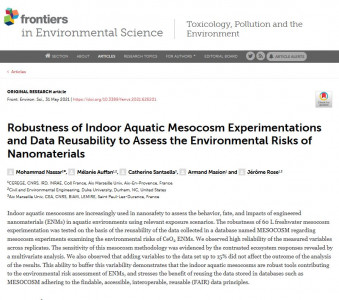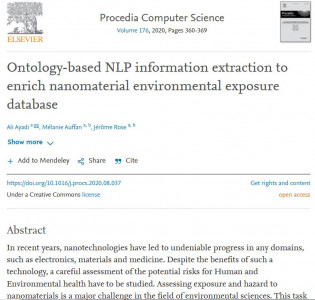Article on "Key parameters influencing the uptake of m-xylene on photocatalytic paints" by Morin, J., Gandolfo, A., Temime-Roussel, B., Brochard, G., Bergé, V., Gligorovski, S., & Wortham, H. (2020).
Abstract:
Given the toxic nature of many volatile organic compounds (VOCs) present within indoor environments, it is necessary to develop new materials to eliminate them. Photocatalytic paints represent a promising technology to remove the indoor pollutants but they are not optimised yet. Here we evaluate the capacities of one conventional white-wall paint, three photocatalytic paints containing 3.5, 5.25 and 7% of nano-TiO2 PC 500, and two photocatalytic paints with a hybrid cellulose nanocrystals-nano-TiO2 (CNC-nano-TiO2) to eliminate m-xylene from the indoor environment. In particular, we assess the impact of nano-TiO2 content, light intensity, relative humidity (RH), surface temperature and pigment volume concentration (PVC) on uptake of m-xylene. Uptake coefficients of m-xylene increase by a factor 3, 5 and 3, respectively, as a function of nano-TiO2 content, irradiance and PVC. In contrast, uptakes of m-xylene decrease for a factor of 2 and 3, as a function of RH, and surface, suppressing the photocatalytic activity. The addition of CNC-nano-TiO2 in the binder induces limited binder degradation. These are very promising results which may help to improve the performances of indoor photocatalytic paints aimed to eliminate indoor airborne pollutants.









